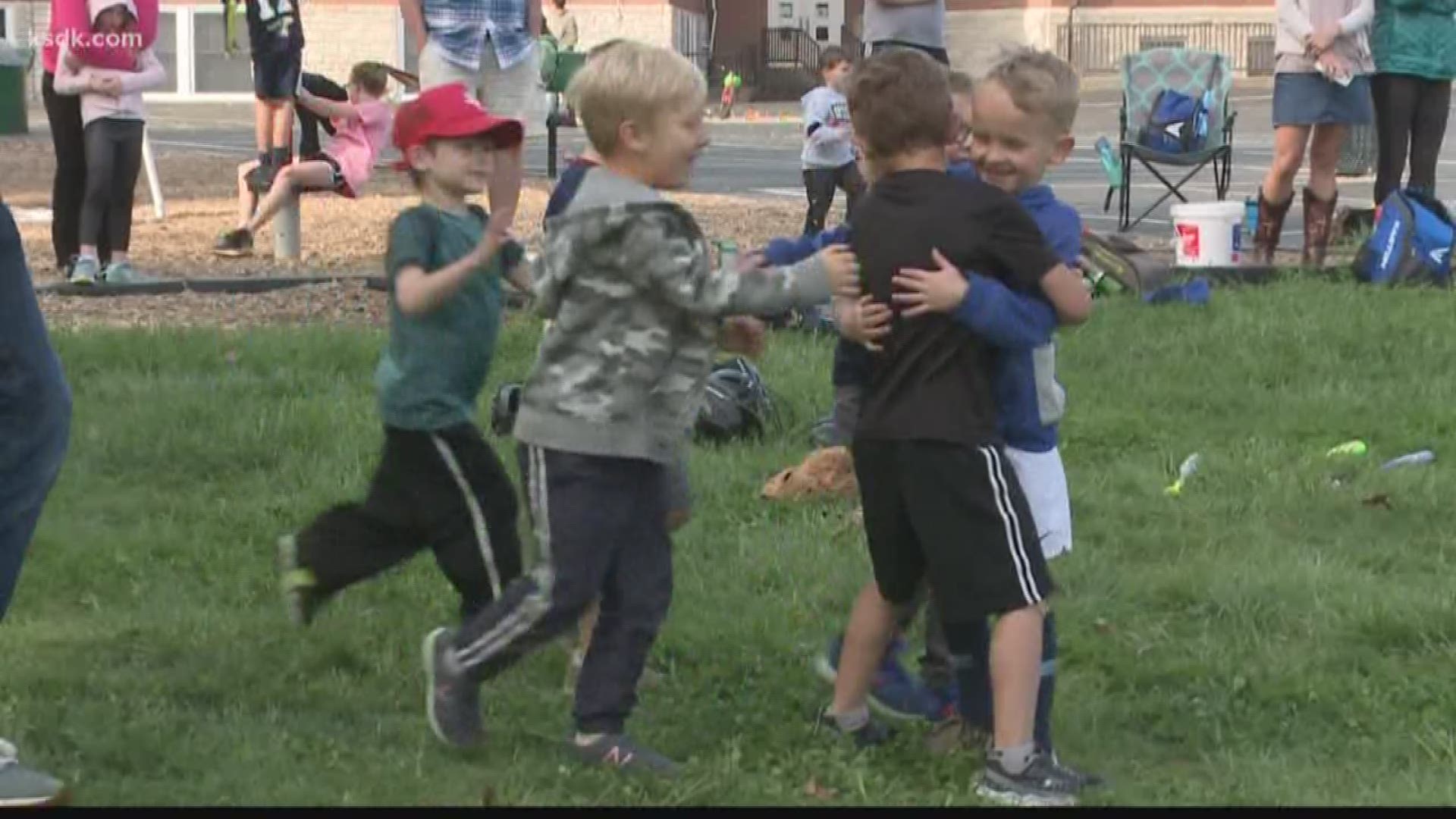KIRKWOOD, Mo. — When Noah Drozda, 5, steps up to home plate, it's a proud moment for his parents because he beat the odds to be there.
"It still takes my breath away a little bit," dad Greg Drozda said.
Just hours after birth, Noah had seizures, leading to brain damage, and a heartbreaking prognosis.
"That's when the doctor starts to tell you stuff like, 'he'll never walk. He won't use his arms,'" Drozda said.
Specialists told the Drozdas that Noah was severely impaired in his right limbs. The athletic family wouldn't see Noah take the field at any sports events, giving him a "one-in-a-million" chance at recovery.
But because they saw the seizures, his parents were able to start therapy immediately. They started with small behaviors, like pulling him up from the crib by the right arm to activate the affected side of his brain.
"Children are really more adaptable than we give them credit for," Noah's mom, Mandy Drozda, said.
The Drozdas' doctors say they intervened when Noah's brain was still "plastic," allowing it to create workarounds that bypassed the damaged sections.
A pediatric nurse practitioner by trade, Mandy told coworkers at Washington University that she -- and Noah -- were available for studies on pediatric brain function. Researchers took them up on the offer.
Washington University occupational therapist Catherine Hoyt was part of the team studying Noah and other kids with movement trackers, called accelerometers.
"We can put these on children as young as two months without a problem at all," Hoyt said.
Strapped onto each wrist, the devices track every time a child moves their arms, much like a FitBit or Apple Watch.
Here's what they found: kids use both arms equally until they're about three, but then they start to slightly favor a dominant hand. In kids with motor impairments, the ratio was significantly lopsided.
But Noah's data stood out. He was behaving like his peers, defying expectations.
"Cases like Noah show us that the brain has the capacity to change when you provide early intervention," Hoyt said.
Hoyt said this information could benefit other kids. First, Noah's recovery shows the importance of early intervention. And the wristlets could help diagnose other children.
With a price tag under $250, it's possible doctors' offices could keep a set in stock and use them in routine screenings to pinpoint an issue as early as possible.
As Noah sprints to home plate with his new baseball team, each leg moves with the same strength and stride as the other. Only his parents know that this 16-second run around the bases really took him years to achieve.
To read the results of the Washington University study, click here.

